An impressive fortress sits majestically along the banks of the Dordogne River just 30 minutes from Bordeaux. It’s Château de Vayres and it’s one of the most striking fortresses of the Gironde. With Château de Vayres’ nearly 1000 years of history and beautiful gardens, the castle is well worth the easy day trip from Bordeaux by train.
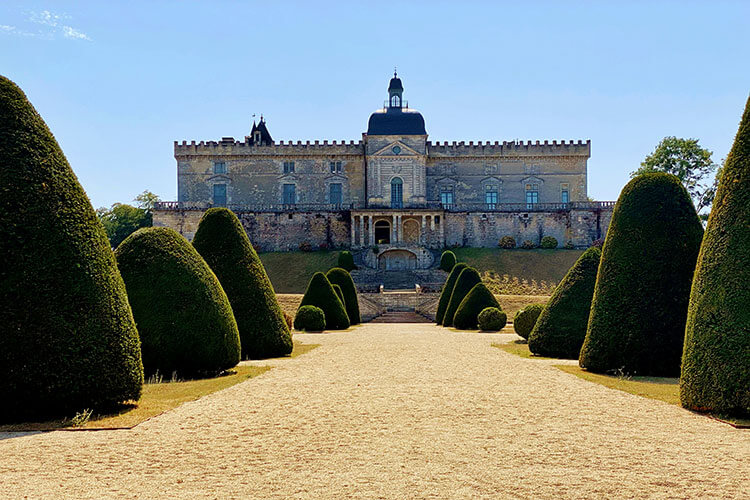
The History of Château de Vayres
Like so many castles around the Gironde, the history of Château de Vayres is a bit murky. And while it’s a peaceful site to visit today that evokes visions of days lounging along the breezy Dordogne while leisurely sipping a glass of Bordeaux, it wasn’t always such an idyllic place.
It’s not known exactly when the first Château de Vayres was built. Recent excavations of ancient ovens and pottery in the gardens indicate the site has been occupied since Gallo-Roman times, and it’s believed there was likely a Gallo-Roman wooden fortress there.
The history we do know begins with mentions of the stone fortress in texts dated from the end of the 10th century. It was likely a much more modest fortification at that time, and nothing remains of that original structure today.
By the 13th century, Vayres was a strategic spot along the Dordogne essential to defending Bordeaux. As you’ll learn during the visit of Château de Vayres, the Tour du Moulin is the oldest part still standing from the structure built in the 13th century. The tour was probably located at the original entrance to the castle.
In 1288 Rose de Bourg married Amanieu VII d’Albret and Château de Vayres and its land came under the control of the d’Albert family though Rose de Bourg’s marriage dowry. The château stayed in the d’Albert family for 300 years.
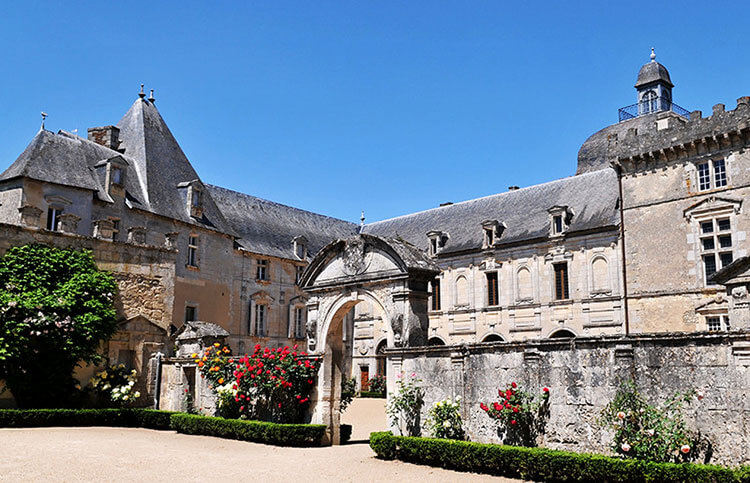
In 1326 the Hundred Years War is on the horizon and Amanieu’s son, Berard, takes the side of England in the fight for control of the Aquitaine region. It’s with the financial support of King Edward II of England that Château de Vayres is expanded. The moat, which is dry today, and the entrance gate are constructed.
During the Hundred Years war the castle flip-flopped ownership between the French and the English. Once again through marriage, it was acquired by Cesar Borgia in 1499. And Borgia’s daughter restored the ownership to Henri d’Albret, King of Navarre.
It was through this lineage of the d’Albert family that Henry IV, King of France, inherited Château de Vayres. Henry IV even stayed there a number of times, before finally selling the castle in 1583.
As Château de Vayres had been badly damaged in the Hundred Years War, the famous architect Louis de Foix was commissioned to restore and rebuilt the castle in the French Renaissance style. It’s at this time that the elegant facade was added.
But the castle’s turbulent history wasn’t finished just yet. Power struggles between noble families in the Aquitaine during the 17th century saw the castle as a scene for a particularly violent battle that left Château de Vayres once again badly damaged.
The last restoration of Château de Vayres took place in 1700 when Jacques-Joseph de Gourgue, the Bishop of Bazas, harmonized it in the style of the 18th century. He’s responsible for the monumental stairway that sits on the location of the old moats. His family, the de Gourgues, owned the château until 1900.
Though Château de Vayres was classified as a historical monument in 2001, it is still privately owned and occupied. Keen eyes will spot family photos as you tour the castle.
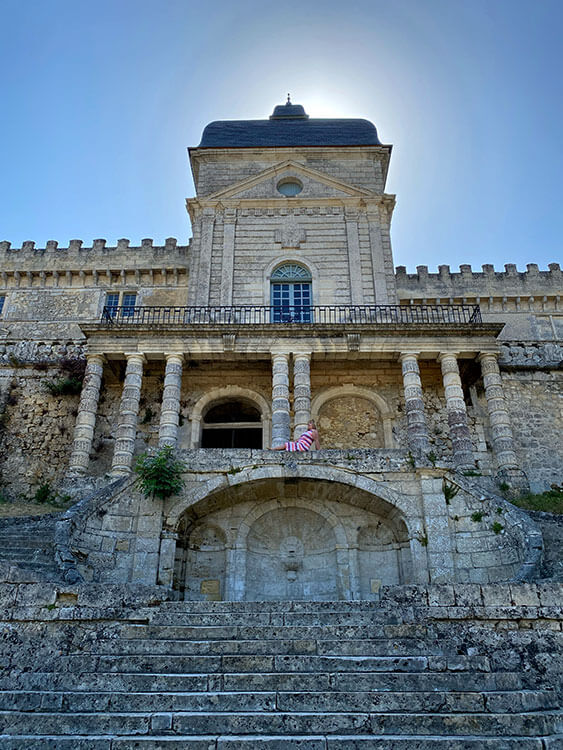
The Visit at Château de Vayres
Château de Vayres can only be visited on a guided tour, as it is still occupied by the owners. Though the tour is offered only in French, English-speaking visitors receive an English language guide at the ticket booth to follow along on the tour with. And in our experience, the guides do speak English and are happy to answer questions in English.
Beginning outside, the guided tour points out some of the architecture such as the Tour du Moulin being the oldest part of the castle and a bit about the history.
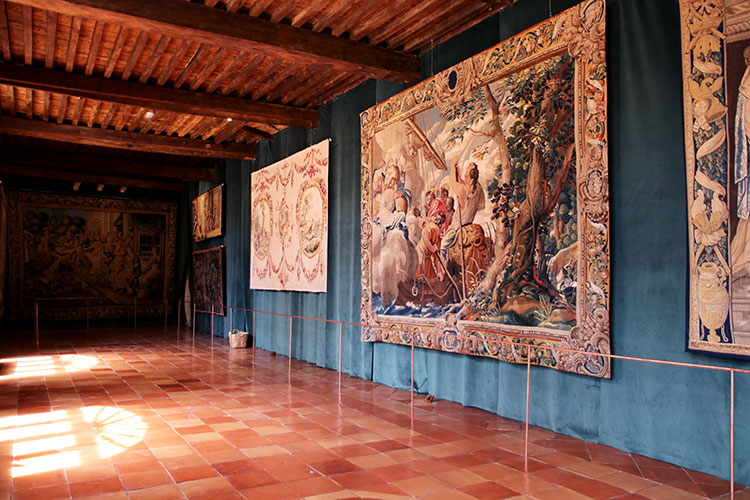
Moving inside, there’s a small but impressive collection of tapestries. The guide speaks a bit about the tapestries, pointing out various details.
Next, the tour visits the private chapel of Château de Vayres. An interesting feature of the chapel is that it’s an echo chamber. Adults and kids alike will be fascinated by the architecture that allows the reverberation of sound to travel kitty-corner. The sound coming through the walls is mind-boggling clear, like speaking through a telephone.
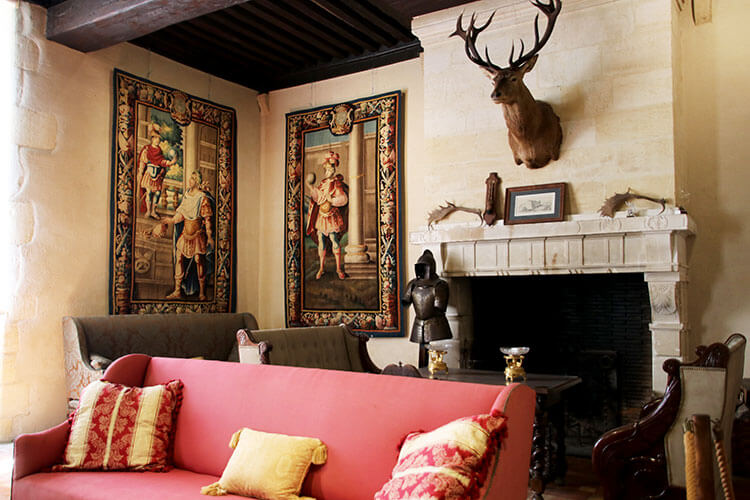
The tour continues through the Henri IV drawing room with its period furniture, through the kitchen with its collection of brassware and through a few formal drawing rooms upstairs.
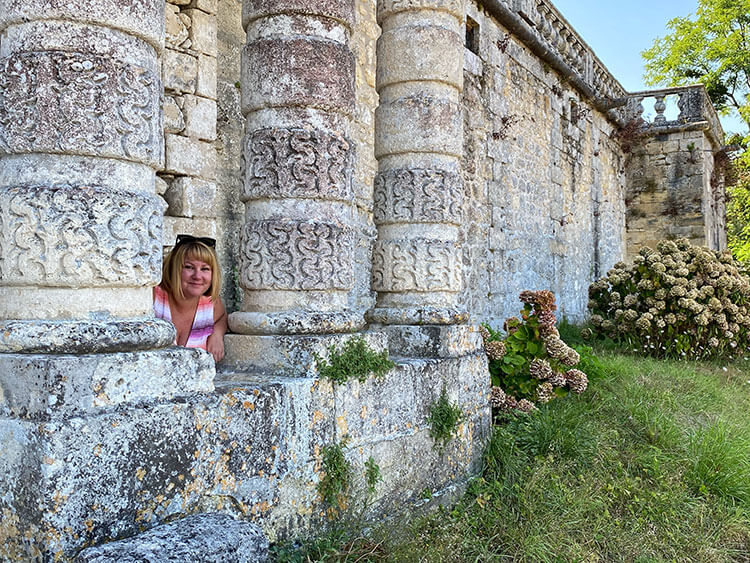
The tour of Château de Vayres lasts around 45 minutes, before visitors are welcomed to explore the formal gardens at their own leisure. There’s also a scavenger hunt game families visiting might like to download to keep kids entertained during the tour.
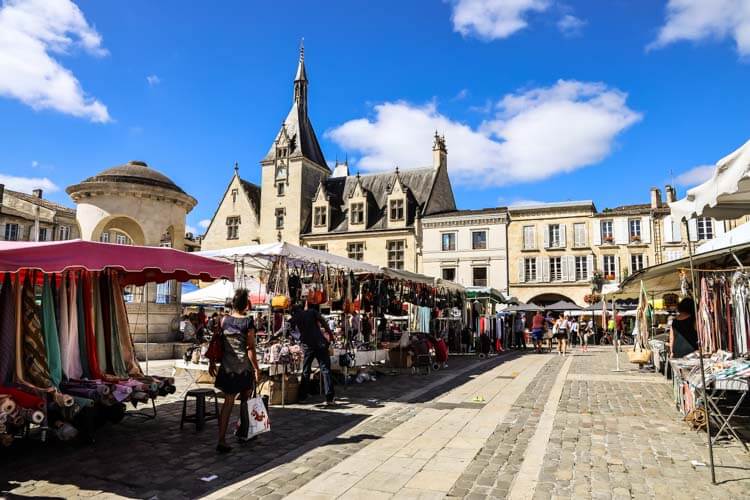
Visit Château de Vayres from Libourne
Libourne is one of the best towns near Bordeaux and makes for an excellent day trip from Bordeaux. Visit the Libourne open air market in the morning and have lunch in the bastide town before hopping on a short 5-minute train ride to Vayres for a guided tour of the castle.
Know Before You Go
To arrive by train, take the TER from Gare Bordeaux Saint Jean to Gare Vayres or TER from Gare Libourne to Gare Vayres. It takes around 25 minutes by train and Château de Vayres is a short 5 minute walk from the train station.
Also note that Château de Vayres does not accept credit or debit cards. Prepare to pay with cash.
This article contains affiliate links. When you book on Trainline through our affiliate partner site, we earn a small commission at no additional cost to you.
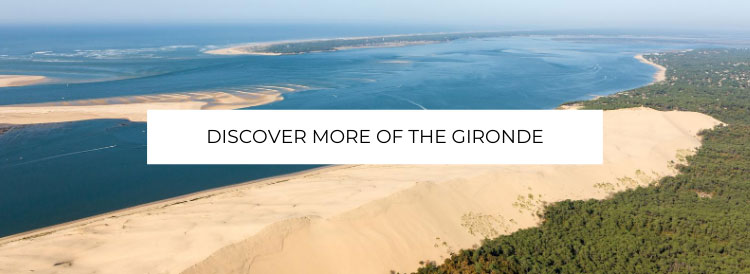
Leave a Reply